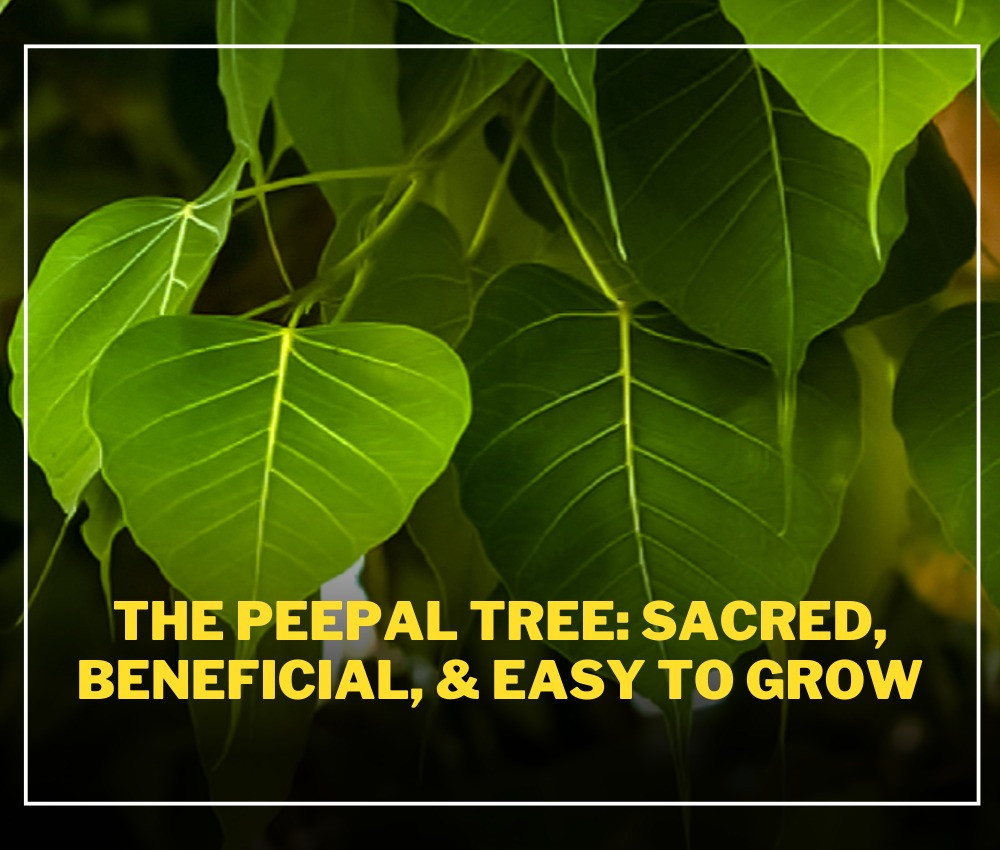The Peepul Tree: Sacred, Beneficial, and Easy to Grow
The Peepul Tree, revered for its spiritual significance, boasts heart-shaped leaves and purple figs. Its cultivation offers holistic wellness and a connection to tradition.
Introduction:
The peepul tree, scientifically known as Ficus religiosa, holds a unique position in both the botanical and cultural realms. Revered for its spiritual significance, this majestic tree stands tall as a symbol of enlightenment and natural beauty. Let's delve into the fascinating world of the peepul tree, exploring its morphological characteristics, growth habits, and cultural importance.
Morphological Characteristics:

The peepul tree is an impressive specimen, reaching heights of up to 30 meters with a trunk diameter of 3 meters. Its large heart-shaped leaves, measuring 10-17 cm in length and 8-12 cm in width, feature distinctive extended drip tips. The tree bears small figs, 1-1.5 cm in diameter, which transition from green to purple when ripe. An intriguing feature of the peepul tree is the continuous movement of its leaves, even in still air, attributed to the long leaf stalk and broad leaf structure.
Growing Season and Type:

In its native habitat of India, the peepul tree thrives in hot and humid conditions, preferring full sunlight and well-drained loamy soil with a pH below 7. However, this remarkable tree can adapt to various soil types and climates, including the urban landscape of Sydney, Australia.
Cultural Significance:

The peepul tree holds immense cultural and religious significance, particularly in the Buddhist faith, where it is revered as the embodiment of Buddha. Its association with enlightenment and spiritual awakening makes it a focal point for meditation and worship. Cuttings from ancient peepul trees, dating back to 288 B.C., are treasured relics in places like Sri Lanka, underscoring its enduring legacy.
The peepul Tree in Sydney:

Despite being native to India, the peepul tree has found a home in diverse landscapes, including Sydney, Australia. In this cosmopolitan city, the peepul tree thrives as a symbol of cultural diversity and natural beauty. Its presence in parks, gardens, and urban spaces adds a touch of serenity and spirituality to the bustling cityscape.
Health and Wellness Benefits:

Beyond its cultural significance, the peepul tree offers a plethora of health and wellness benefits. Extracts from its leaves are used in traditional medicine to treat various ailments, including digestive issues, inflammation, and gum disease. The tree's calming presence and fresh oxygen production contribute to overall well-being and environmental sustainability.
Environmental Impact:

As a large deciduous tree, the peepul tree plays a vital role in maintaining ecological balance. Its extensive root system helps prevent soil erosion, while its broad canopy provides shade and habitat for diverse wildlife. In urban settings like Sydney, the peepul tree serves as a natural air purifier, enhancing air quality and mitigating the effects of pollution.
Caring for the peepul Tree:

In Sydney's temperate climate, caring for peepul trees requires attention to soil moisture, sunlight exposure, and occasional pruning. With proper maintenance and care, these trees can thrive and beautify the urban landscape for generations to come.
Also Read : How to Choose the Right Soil
Conclusion:
The peepul tree transcends its botanical identity to become a symbol of spiritual enlightenment, cultural heritage, and environmental stewardship. Whether in the bustling streets of Sydney or the tranquil landscapes of India, its presence evokes a sense of reverence and awe. As we continue to appreciate and protect this magnificent tree, we honor its legacy and celebrate its enduring significance in our lives.
